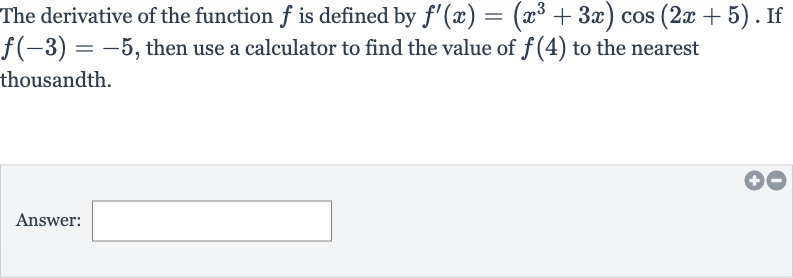Full solution
Q. The derivative of the function is defined by . If , then use a calculator to find the value of to the nearest thousandth.Answer:
- Integrate for : To find , we need to integrate the derivative to get the original function . The integral of will give us up to a constant , which we can determine using the given value .
- Complex Integral Calculation: The integral of is not straightforward due to the product of a polynomial and a trigonometric function. We will need to use a numerical method or a calculator to approximate the integral from to .
- Numerical Integration Process: Using a calculator with numerical integration capabilities, we input the function and integrate from to . This will give us the change in over this interval.
- Calculate : After performing the numerical integration, we obtain a value (let's call it ). To find , we use the fact that . Since we know , we can calculate .
- Substitute and Solve: We substitute the value of obtained from the calculator into the equation to find the value of to the nearest thousandth.

